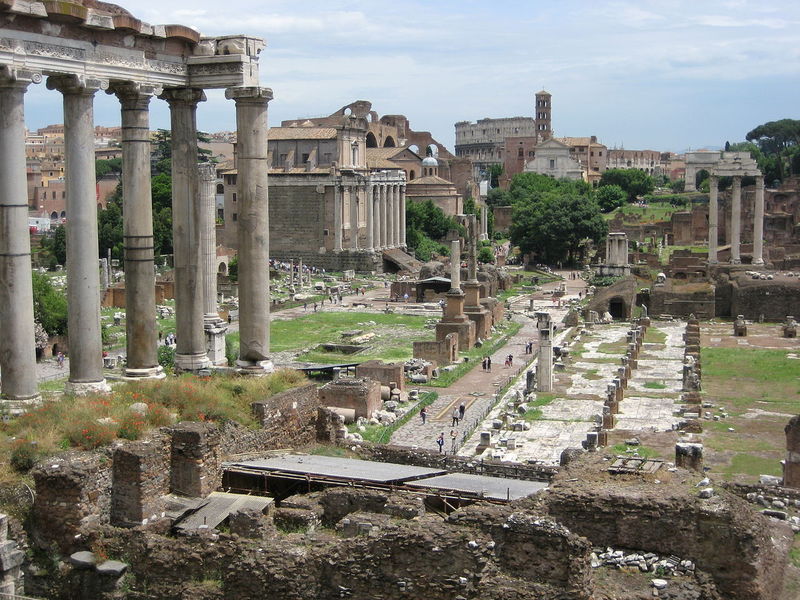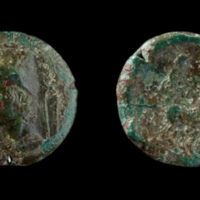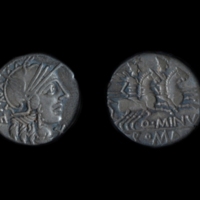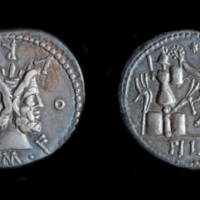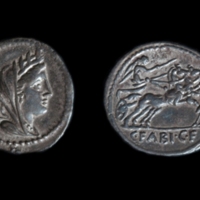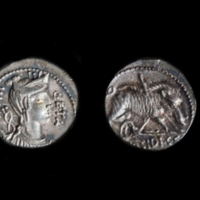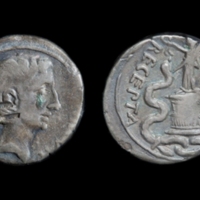Republican and Early Imperial
One of the Roman words for coin, pecunia, comes from another Latin word, pecus, which means cow. Cattle were a sign of wealth in the ancient world and borrowing the word to also signify physical coin, another sign of wealth, is not surprising.
Romans began their coinage system with minting crude pieces of bronze in many different shapes (lump, circle, rectangle) that were called aes rude. This practice evolved into the aes signatum, which were slightly more regular, with discernible pictures of animals and weapons, but were still a means of trade based on weight, more than a form of money.
The aes grave, or heavy bronze, was next, and though still not perfect, was at least circular. This piece of bronze was minted in several denominations: the first set of denominations in the Roman system of coinage. They included the as, semis, triens, quadrans, sextans and the unica.
This set of Roman coins, first minted around 300 BCE, had a standard way of delineating the value by attributing a certain god or goddess to the OBVERSE of each kind of coin:
As = Janus, Semis = Jupiter, Triens = Minerva, Quadrans = Herakles, Sextans = Mercury, Unica = Roma.
The prow of a ship is found on almost all the reverse of these coins, probably as a reference to Rome's newfound naval power.
This system eventually gave way to a more Greek influenced system, and around 269 BCE, with the rise of Roman power, the use of the silver drachm became a standard Roman practice. Possibly around the start of the second century BCE, the Romans introduced their own set of silver coinage, most notably the denarius, but also including the sestertius (one quarter of a denarius) and quinarius (half a denarius).
Inflation became a major problem around the time of the Punic wars (three individual wars against Carthage starting in 264 BCE), but with the final defeat of Carthage in 146 BCE, a slow but diligent reorganization of the monetary system fixed the problem and the denarius saw its start as the main denomination of Roman coinage.
This time also saw a much wider range of obverse and reverse designs on its coins. Most of the Republican coins from Hallie Ford's collection are from the transitioning time period. No longer do we see the standard Roma on each unica, but a wide range of artistic inspiration.
Some of the first coins of Caesar and Augustus, seen at the bottom of this page, were the first of an eventual standard practice of Imperial portrait on the obverse. Caesar was the first to feature his own face (though not seen on this particular coin), but Augustus was the one to cement the practice.
References:
Hannestad, Niels. Roman Art and Imperial Policy. Aarhus C: Aarhus UP, 1988. Print.
Klawans, Zander H. Reading and Dating Roman Imperial Coins. New York: Sanford J. Durst Numismatic Publications, 1982. Print.
Sear, David R. Roman Coins and Their Values: The Millennium Edition. London: Spink, 2000. Print.
